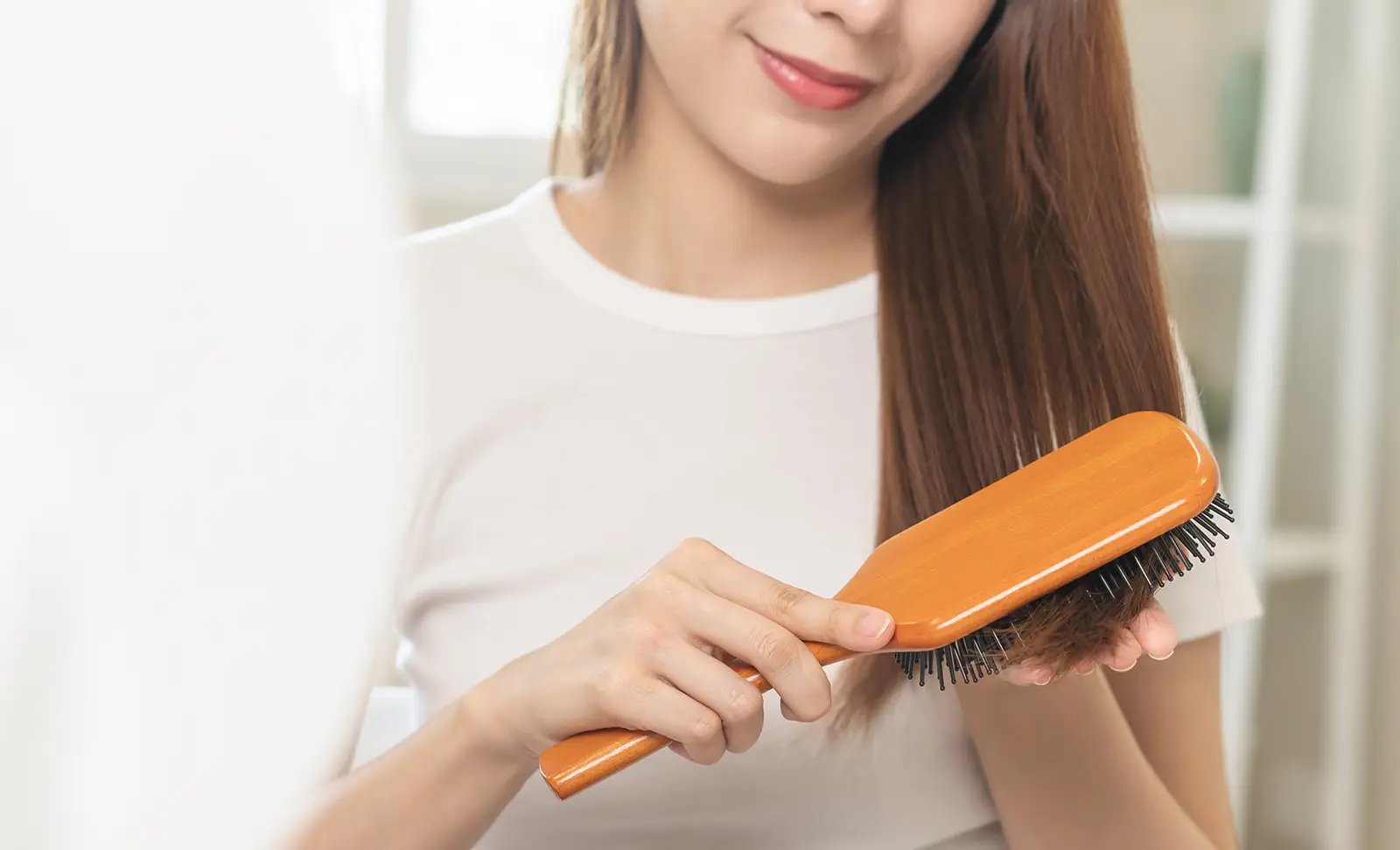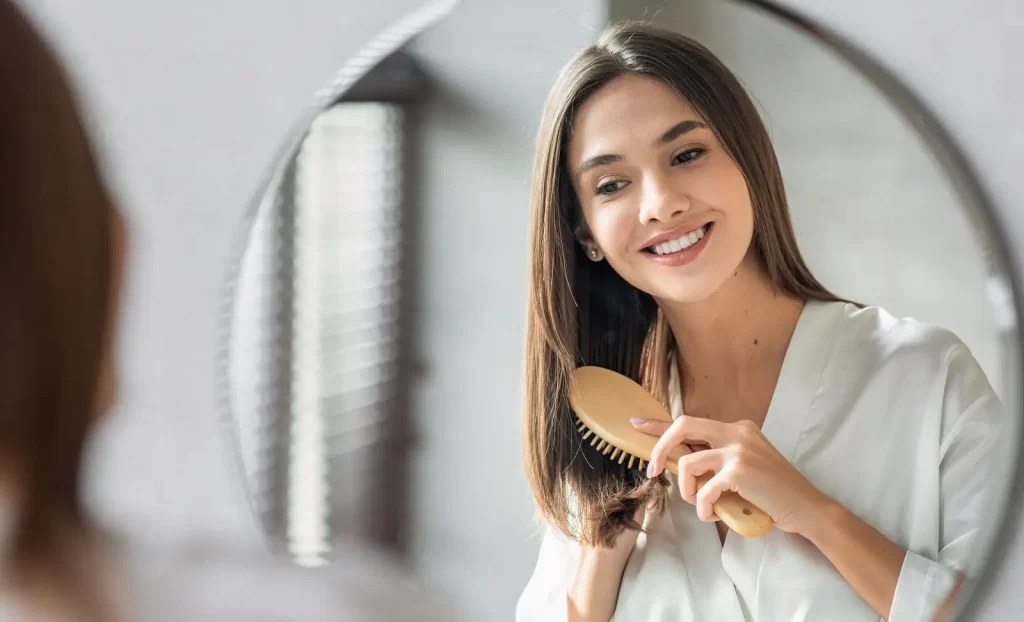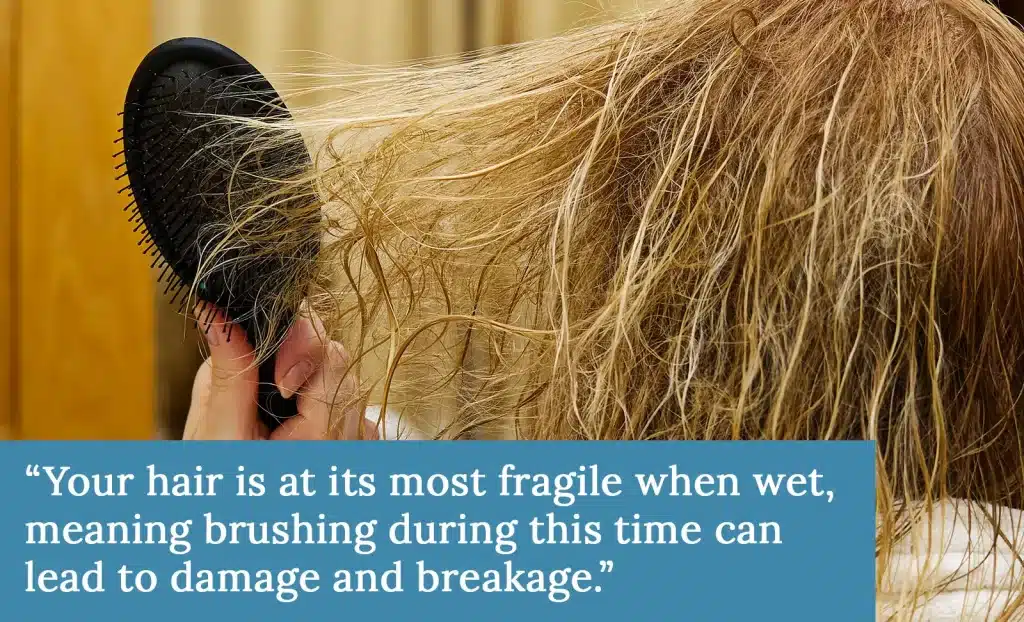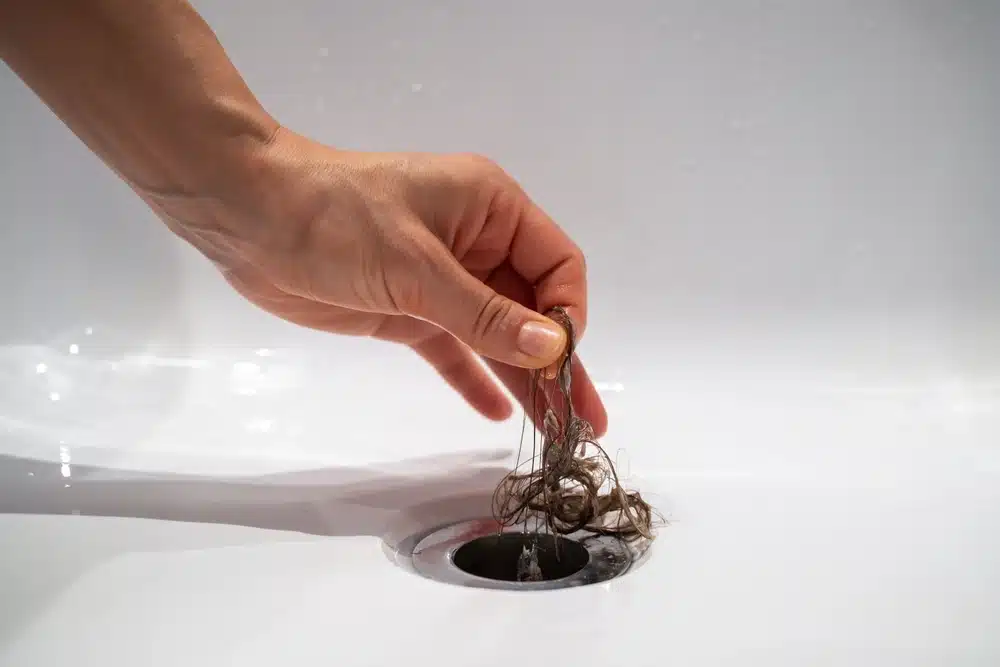Do you aim to have thick, luscious locks? You may have already invested in various hair oils, serums, and masks to achieve the hair of your dreams, but you might not have realised that something as simple as hair brushing is already helping your hair to grow.
So, is there any truth to it – does hair brushing stimulate growth? Can it act as a hair loss treatment? In this guide, learn all you need to know about hair brushing and how your hair grows.
How Brushing Your Hair Boosts Hair Health and Growth
It’s true – while brushing your hair is unlikely to treat hair loss, the simple act can positively affect growth. Wondering how does brushing hair stimulate growth? Here is how it works.
It Stimulates Blood Flow
You might have heard that a scalp massage is beneficial for hair growth, and this works because of the increase in blood flow to the scalp. The same thing occurs when brushing your hair. After all, brushing your strands (and the scalp) is a lot like a massage, and this increased blood flow delivers more oxygen and essential nutrients to the hair follicles, ensuring healthier, thicker growth.
It Detangles
Growing thick, luscious hair is hard when your strands are always tangled. Hair brushing is useful here as it untangles all the knots, ensuring your hair is smoother and easier to manage. As a result, your hair is less likely to break off, giving it a chance to grow out.
It Distributes Natural Oils
Your scalp naturally produces oil, known as sebum. This highly moisturising natural oil is fantastic for your hair, and brushing your hair when slightly oily means distributing that oil through your lengths, giving your locks a burst of hydration. This is especially beneficial for those with damaged hair.
It Promotes a Healthier Scalp
Another way brushing your hair is good for hair health and growth is that it helps remove all the dead skin cells and impurities on the scalp. Many of these cells clog the pores on your scalp, causing issues and leading to hindered growth, and brushing them away means the scalp has a cleaner, healthier environment to grow new hair.
As you can see, brushing your hair promotes healthy hair growth – but does it help your hair grow faster? Not necessarily – hair brushing is just a good habit to help keep your strands and scalp healthy, and the rate at which your hair grows is simply determined by genetics.
Can Brushing Your Hair Cause Damage?
Now, onto the flip side. We now know the answer to, “Does brushing hair stimulate growth?” – the answer is that yes, it can facilitate healthier growth, although it won’t speed up the natural hair growth cycle. However, brushing your hair too much can have the opposite effect and even lead to hair damage and loss.
Brushing can lead to damage if you brush too much, use the wrong type of brush, brush at the wrong times, or are too rough with the tool. This can all lead to an irritated scalp, split ends, breakage, and hair loss – all things you want to avoid.
Interested in an app that puts you in touch with hair experts? Try our Hair Track App.
How to Brush Your Hair for Optimal Hair Health
Do you want to experience hair brush growth? If you’re ready to boost your scalp and hair’s health, here’s how to do it correctly.
Choose the Correct Hairbrush
The first step is choosing the correct hairbrush. This part is a little trickier than you might think, as there is no single best hairbrush out there that works perfectly for everybody; the right brush depends on your hair type, and, often, it’s best to have a few for different purposes. Generally, boar bristled brushes are known for their quality, able to redistribute the oils throughout your hair well and leading to shinier, healthier locks.
Avoid Brushing Wet Hair
Brushing wet hair is a big mistake. Your hair is at its most fragile when wet, meaning brushing during this time can lead to damage and breakage [1], which you want to avoid. Always wait until your hair is dry before using your hairbrush.
Brush Twice Daily
There’s no need to overdo it – brush your hair twice daily for best results. Of course, you can adjust this to fit your hair type; for example, those with curlier hair may find that brushing less frequently works better for them.
Start at the Ends
To avoid breakage, start brushing at the ends and slowly make your way up the hair shaft. This helps because it detangles your strands before you reach the roots, meaning the root area is less likely to sustain any damage.
Be Gentle
You don’t need to be rough, even if you have knots! Be as gentle as possible to avoid excessive damage. It’s better to go slow, as you can still get through all your tangles this way.
Incorporate an Oil
Is your scalp not very oily? Does your hair need a little extra hydration? If so, incorporate an oil of your own. The best oils for hair growth include pumpkin seed oil, rosemary oil, and castor oil, so consider using one (or more!) of those.
Brush in Sections
Start brushing in sections if your hair is particularly thick or gets tangled easily. Section your hair off and target one section at a time. This means you avoid brushing too hard all over.
Do Not Overbrush
Overbrushing can be just as problematic as under brushing. While it’s true that the motion of brushing stimulates hair growth, doing it too often can weaken the strands and irritate the scalp. It can even pull too much oil from the scalp and strands, and lead to dull-looking hair.
Clean Your Brush
When was the last time you cleaned your hairbrush? Your brush requires regular cleaning; otherwise, it could grow bacteria and fungi. This may cause scalp conditions, and the brush will not perform optimally.
To clean your brush, remove all the hair caught within the bristles, and then clean the head with warm, soapy water – you could even use the same shampoo you use on your strands. Once cleaned, remember to dry it fully before use.
What if You Are Experiencing Hair Loss?
If you are losing your hair, knowing how does brushing hair stimulate growth likely isn’t enough to bring back your fallen locks. While hair brushing can lead to a healthier scalp and strands, it won’t actively treat hair loss.
Your first step is to determine the root cause of your hair loss. The most likely cause is androgenetic alopecia, also known as male or female pattern baldness, as this is the most common cause of hair loss and affects most people at some point in their lifetime. However, it’s more prevalent in men. Your hair loss might be caused by something else – perhaps stress, hormones, a nutritional deficiency, or an autoimmune condition. Speaking to a doctor is the best way to know with certainty.
Hair Loss Solutions
Losing your hair is never easy, and trying to brush hair for growth after experiencing hair loss won’t show any real results. The good news is that there are other restoration treatments for your hair including:
Hair Loss Medications
Hair loss medications include minoxidil, finasteride, and dutasteride – all of which work differently. Minoxidil is the most popular. It’s a topical treatment you can purchase over the counter and works by expanding blood vessels to boost blood flow to the scalp. Finasteride and dutasteride require a prescription and are for men only, as they work by inhibiting the production of DHT.
Non-Surgical Clinical Treatments
Several non-surgical clinical treatments can help with hair growth, including microneedling, PRP injections, and low-level laser therapy. All of these are minimally invasive and work by stimulating the follicles.
Hair Transplants
Hair transplants have come extremely far over the years; nowadays, the most advanced hair transplants, including the DHI and FUE hair transplant, involve very minor incisions that leave minimal scarring and very natural results. There is a reason they are so popular with celebrities! It is, without a doubt, the most effective way to regrow hair and is best for those who’ve experienced substantial hair loss due to androgenetic alopecia.
Does Brushing Hair Stimulate Growth? Final Thoughts
So, does brushing hair stimulate growth? In theory, yes, as it boosts blood flow to the scalp, ensuring the follicles are well-nourished, which promotes hair growth. However, brushing and hair growth aren’t as linked as you might think, as it doesn’t actually change the rate at which your hair grows.
Maintaining a good hair brushing routine is a good idea to keep your hair as healthy as possible. If you want a more targeted hair restoration approach, a hair restoration treatment is the better route forward, and that’s where we can help. Check out our patients gallery to see how we’ve already helped numerous clients regain a full head of hair.
Sources:
- https://www.thecut.com/article/how-bad-is-it-to-brush-wet-hair-really.html




